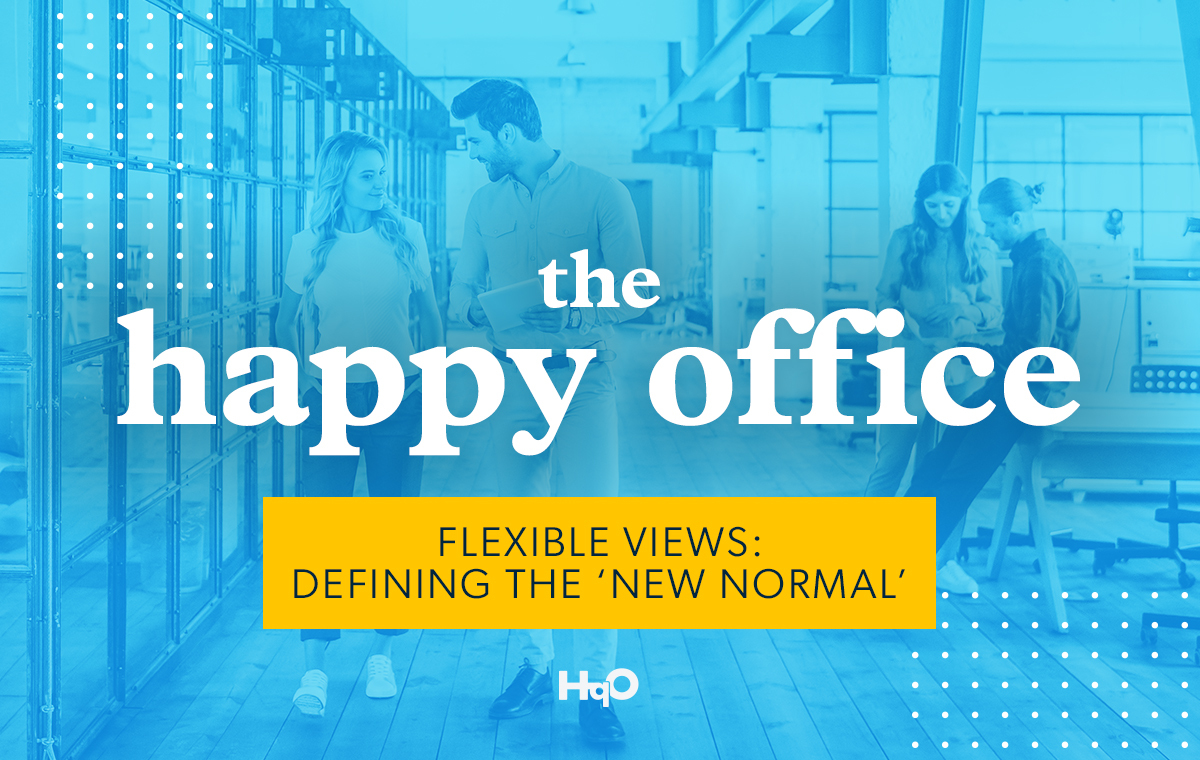Does anyone really know what the term “new normal” means?
For the past few years, we’ve heard many different terminologies to describe the effects of the COVID-19 pandemic — and specifically, its impact on the workplace and commercial real estate (CRE) industry. No phrase, however, is as prevalent as the “new normal,”with employers and property owners alike scrambling to figure out how to bring employees back to the office and get the most out of their investments.
Though the future of work is still up for debate (and constantly changing, mind you), there are a few things that we do know for certain. First and foremost: building occupancy has changed. HqO data reveals that 34% of employers have downsized their real estate portfolios, and an additional 42% plan to downsize in the next two years. Following suit with this trend, the workplace has become predominantly hybrid. 86% of employers have already implemented a flexible and/or hybrid working model since the beginning of the pandemic, and 14% plan to implement one in the next two years.
Then, of course, there is what employers are doing with their physical work environments. 68% of employers have redesigned their workspaces to support employee needs, while 28% plan to implement redesigned spaces in the next two years.
So, what do these more flexible, redesigned workplaces look like in real life? In a recent FastCompany article, authors Mark Sullivan and Grace Buono asked several business leaders about their hybrid work strategies and thoughts on workplace success. Below are a few of their responses.
Miro
“[…] We’ve seen that the biggest benefit employees want from an employer is flexibility in when, where, and how they work. Employers who want to retain talent need to enable that flexibility by investing in ways of working that support it. The new normal is constant change, which means being agile is more important than ever, and adaptability is a key differentiator between success and failure.”
— SANGEETA CHAKRABORTY, CHIEF CUSTOMER OFFICER
Audible
“It’s up to employers to determine what activities truly require employees to go into the office and make the office an exciting and collaborative place to work. The phenomenon known as the Great Resignation that is fueling a massive wave of career changes is actually a significant opportunity for businesses to offer employees a compelling reason to stay. If businesses expect to retain employees, they need to practice active listening.”
— ANNE ERNI, CHIEF PEOPLE OFFICER
Qualcomm
“I’m a firm believer in the importance of in-person collaboration. Yes, we have the ability to work remotely, but we also want to preserve our culture. The reality is, if you don’t create as a community, it’s very difficult to maintain a strong culture. It’s all about striking the right balance between flexibility and providing people with an environment to work together effectively. We had a phased approach in bringing our employees back to the office, and we’re now embracing a hybrid schedule. We allow flexibility but are leaning into opportunities for people to spend time together and continue to build our incredible culture.”
— CRISTIANO AMON, CEO
Intel Corporation
“While it’s a major shift from pre-pandemic life, we’re trying to keep our new approach simple and avoid overcomplicating our policies. Our employees have been delivering amazing results over the past two years, so let’s embrace flexibility. By doing that, we can attract and retain the best and brightest talent. While hybrid and flexible working models can cast a wider recruitment net and provide the flexibility many candidates seek, we know we still face the challenge of ensuring that the future model is inclusive and supports everyone long term.”
— CHRISTY PAMBIANCHI, EXECUTIVE VICE PRESIDENT AND CHIEF PEOPLE OFFICER
Meta Reality Labs
“The move to hybrid work is an even bigger shift that brings new challenges for how we all communicate. Adapting our physical spaces to provide virtual connection creates new requirements for office technology. It means investing in versatile, immersive tools. The metaverse will be one of the “tools” that will change businesses for the better with technology that helps us work smarter and offers synchronous collaboration in both physical and virtual spaces.”
— RYAN CAIRNS, VICE PRESIDENT OF HOME AND WORK
Workplaces of the Future
Though the ways people work will vary from company to company, it is clear that a modern toolset will help employers and employees alike achieve a greater level of personalization, agility, productivity, and engagement with the workplace. To learn more about how HqO’s Workplace Experience Platform can help your business meet these goals and more, schedule a demo today.



